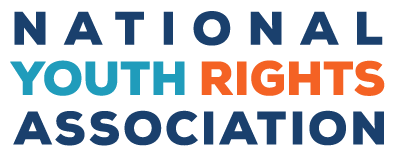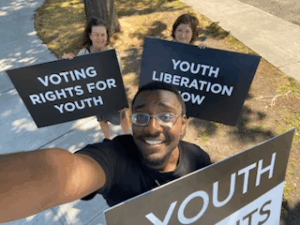As a high school student, I began to realize just how differently my female friends and I experienced school compared to our male peers. We faced discriminatory dress code enforcement that treated our bodies as “distractions,” and we were often left on our own to deal with sexual harassment that was downplayed as “jokes” or “compliments.” As we got older, the threat of sexual violence crept in while consequences for those who committed it never seemed to appear.
These experiences are far from unique. A 2011 study found that nearly half of students had experienced sexual harassment, with female students disproportionately impacted. One study found that one-fifth of LGBT students were prevented from wearing certain clothing based on their gender, while another study found that black girls face sexist and racist dress code enforcement at school. The Associated Press has reported that, between 2011 and 2015, 17,000 sexual assaults were committed by students, a number that is likely far too low due to underreporting.
The resources available for students to deal with these issues while I was in high school were few and far between. Most legal resources on sex discrimination were written for policymakers, lawyers, and school administrators. When I began searching for laws that might help a friend dealing with harassment, I was excited to eventually discover Title IX of the Education Amendments of 1972, a federal civil rights law. Title IX guarantees students’ rights to an education free from sex discrimination and requires schools to investigate complaints of sexual harassment and remedy their effects.
Enamored with this new information and its potential, I worked with friends through a club we ran to host a meeting about sex discrimination, sexual violence, and Title IX. In the meeting, we talked about what Title IX meant for students and how students could seek help.
While the meeting was popular with students who attended, my club’s moderator and our school administration were not so thrilled. The subject of harassment and violence against young people was deemed inappropriate for us to talk about ourselves and acknowledging a problem with sexism at school would make the school “look bad.” As soon as the workshop finished, I was informed that if we ever talked about the topic again, the entire club would be shut down.
In the long run, my school’s harsh reaction helped to deepen my commitment to social justice advocacy, but at the time, I remember that it left me feeling incredibly alone. My friends and I were by now deeply aware of a problem that “adults” would not address, but we were prevented from even talking about it openly ourselves. Afraid to get any of us into even more trouble, I left these issues unresolved before graduating shortly after, leaving the next group of students to deal with the same problem over again.
While Title IX can be a powerful law for addressing sexism, what this experience and the stories of many other students have forced me to realize is that, for students in middle schools and high schools, Title IX is rarely enough on its own to resolve discriminatory school environments. To succeed in changing school culture, students need a much broader understanding of their youth rights, not just to an environment free from sex discrimination but also their right to speak up about problems at their school, to organize to solve them, and to participate in decision-making.
Students also need the ability to challenge deeply-rooted ageist assumptions. While I was in high school, resources on Title IX were created almost exclusively for adults, based on the flawed and dangerous assumption that young people can simply rely on adults to advocate for us. For my classmates and I, our youth was used both to downplay our concerns and to delegitimize our best efforts to solve them. On a broader scale, the issue of sexual violence on college campuses has attracted significant national attention, but it has taken years for similar attention and resources to be directed towards sexual violence in K-12 schools, often due to ageist assumptions that as young people, we are less affected or less capable of advocating for ourselves.
This dynamic plays out across almost every issue, from sexism and racism to gun violence and climate change. As young people, we are often expected to fight uphill battles on two fronts, one for the cause and one for our right to be involved in that cause at all. Without sufficient support, these challenges can silo and silence us just as we’re getting started.
Ageism in social movements is also a problem for the movements young people are trying to contribute to. Youth activists bring important perspectives on the way that these problems uniquely affect us, and our input is crucial to developing appropriate solutions. Young people also frequently bring a much-needed ability to imagine beyond the current moment and envision something different entirely.
My first experience with youth activism motivated me to get involved with larger youth movements in college, and what I’ve learned since then is that the obstacles we face as young people are rarely inevitable or insurmountable. With better support and resources from other youth-led groups, my first experience with youth rights activism could have turned out much differently. While a small group of students focused on a single issue can be too easily intimidated, networks of students taking an intersectional approach to youth rights advocacy are much harder to dissuade.
While fighting sexism at school was my first introduction to youth rights, what has drawn me to the larger youth rights movement is the realization that intersectional approaches to youth rights have the capacity to help young people address almost any issue. With the benefit of networks that provide solidarity and support, young people can empower one another to be their own best advocates and imagine new and innovative approaches to social change.






I am trying to change my school’s uniform policy which mandates female students to wear skirts that are impractical and uncomfortable, to say the least. Can you give me any suggestions on how to get started?